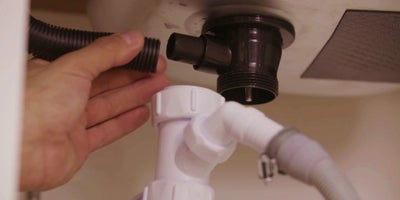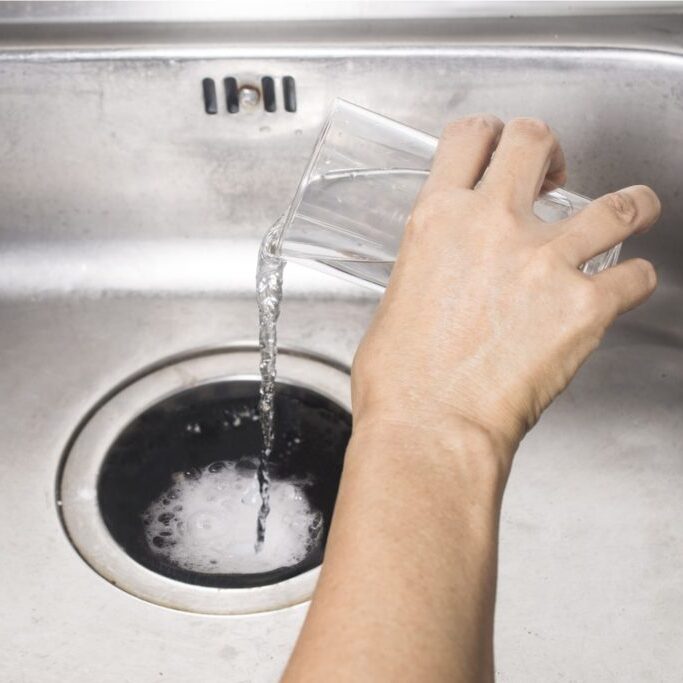Essential Steps To Fix A Slow-Draining Sink
Essential Steps To Fix A Slow-Draining Sink
Blog Article
Were you looking for guidance about Three Common Ways to Fix a Slow Drain?

Introduction
We have actually all been there: You're cleaning your teeth or washing your hands, and you notice the water merging in the sink. Instead of promptly swirling down the tubes, it sticks around, transforming your once-refreshing morning regimen right into a mini overload scene. A slow-draining sink isn't just bothersome; it's often an indication of larger pipes issues hiding underneath the surface. The bright side is that most slow-draining sinks can be repaired with a little knowledge, a couple of standard devices, and some perseverance. All set to tackle this project head-on? Allow's roll up our sleeves and dive right in.
Understanding the Causes of a Slow-Draining Sink
Prior to you begin poking around in your pipelines, it aids to recognize what might be creating the slowdown. Comprehending the source makes it simpler to pick the ideal repair.
Devices and Materials You'll Need
The right tools make all the difference. The good news is, you will not need a totally equipped plumbing technician's van to do the job.
Step-by-Step Guide to Fixing a Slow-Draining Sink
Currently, allow's enter into the nitty-gritty. This detailed process will certainly lead you with simple methods to recover your sink's drainage.
Action 1: Eliminate and Tidy the Stopper
Typically, the stopper (that tiny plug you push down to block water) is the very first offender. Remove it meticulously and clean off any type of hair or substance entraped around its base. Wash it extensively prior to putting it back in position.
Step 2: Utilize a Plunger to Remove Particles
Got that bettor ready? Setting it over the drain and give it a couple of firm pumps. The idea is to create suction that can loosen any kind of clog. If you see bits of particles drifting up, you get on the best track.
Step 3: Attempt a Drain Snake or Cord Wall Mount
If the plunger does not do the trick, it's time to bring out the drainpipe snake. Gently feed it right into the drain and spin as you go. You could really feel some resistance-- that's likely the obstruction. Maintain twisting and drawing up until you remove the blockage. If you don't have a drain serpent, a straightened out cable hanger can operate in a pinch.
Tip 4: Apply a Do It Yourself Drain Cleaner
A natural cleaner made from baking soda and vinegar can break down recurring gunk. Pour half a cup of cooking soft drink right into the drainpipe, adhered to by half a cup of vinegar. Allow it fizz for about 15 minutes, then flush with warm water. This chemical reaction frequently does marvels for small clogs.
Step 5: Reconstruct and Check the Sink
Placed everything back together and run the faucet. Does the water now swirl down the tubes at a decent rate? If yes, provide on your own a pat on the back. If not, don't despair-- there are still a few even more dress up your sleeve.
Crucial Devices for DIY Repair Works
A plunger is your go-to beginning factor. A tiny, sink-sized plunger produces suction that can dislodge minor obstructions. For even more consistent obstructions, a drainpipe serpent (sometimes called a plumbing technician's auger) works wonders. A pair of gloves, a flashlight, and possibly a set of protective safety glasses are likewise useful.
Recommended Cleansing Solutions
Mild recipe soap and hot water can assist break down greasy build-up. A combination of cooking soda and vinegar is a time-tested natural remedy, and enzymatic cleansers offer an even more environment-friendly method. Keep chemical drain cleansers as a last resort, as they can be rough on your pipelines.
Usual Culprits Behind Slow Water Drainage
So, what's clogging things up? Normally, it's a blend of everyday debris-- think hair, soap residue, toothpaste residue, and leftover food bits. With time, these little bits build up and hold on to the pipeline walls, progressively tightening the passage and making it harder for water to go through. Sometimes, mineral deposits from tough water can likewise add to the crud, developing the best tornado for stubborn obstructions.
When is it Time to Act?
If you notice the water draining pipes slower than common, it's a great idea to intervene sooner instead of later. Waiting as well long might result in complete obstructions, unpleasant odors, and even pipeline damages. If the water takes greater than a few seconds to clean out after switching off the faucet, consider it a red flag and prepare to place on your DIY hat.
Security First: Precautions and Preparations
Before you launch into unclogging mode, think of security. You're dealing with possibly unclean water and particles, so slip on a pair of handwear covers. If you're making use of chemical cleaners, ensure the room is well-ventilated and comply with the guidelines on the tag.
Safety Gear and Work Area Configuration
Lay down some old towels or cloths around the sink area to capture dashes. Eliminate any type of items that may enter your method, like soap dispensers or toothbrush holders. Ensure you have great lights-- order a flashlight if needed.
Alternate Approaches for Stubborn Clogs
Not all blockages are produced equal. If your sink still declines to cooperate, take into consideration these alternative solutions.
Baking Soda and Vinegar Method
We already discussed this, yet it's worth keeping in mind once again. This gentle, environmentally friendly method is more secure than chemical cleaners and usually rather reliable.
Chemical Drain Cleaners
Enzyme-based cleaners utilize all-natural bacteria to digest raw material. They're an exceptional choice if you're looking to prevent rough chemicals. Just keep in mind, they may take a bit longer to work their magic.
Chemical Drainpipe Cleaning Company: Pros and Cons
Chemical cleaners can blast via difficult obstructions quickly, yet they're not without downsides. They can produce warmth and fumes, damages pipes if utilized exceedingly, and present environmental threats. Use them moderately, and always adhere to the directions carefully.
Safety Nets to Maintain Your Sink Flowing
Prevention is the most effective cure. By taking on a few easy behaviors, you can keep your sink from reducing in the first place.
Regular Cleaning Up Behaviors
Clean down the sink basin and component location on a regular basis. Get rid of hair or food fragments prior to they have a chance to wash down the drainpipe.
Staying Clear Of Hazardous Substances Down The Tubes
Reconsider before disposing coffee premises, grease, or fibrous veggie scraps down the sink. These offenders cling to pipeline wall surfaces, developing obstructions in time.
Regular Maintenance Checks
Set up a quick regular monthly assessment. Run hot water through the sink for a few mins, taking notice of the flow. If it seems slow, act fast prior to it becomes a full-on clog.
When to Call a Specialist Plumbing Technician
Sometimes, regardless of how tough you try, that block simply won't budge. That's when it's time to generate the pros.
Signs That Suggest a More Major Concern
If your sink drains slowly in spite of several attempts, or if you observe water supporting in other components (like your shower or commode), you might have a more serious plumbing issue hiding much deeper in the system.
Balancing DIY Efforts with Specialist Help
While DIY can save you cash and supply a feeling of accomplishment, there's no pity in calling a professional. A professional plumbing technician can examine your whole pipes arrangement, making sure there's no underlying damage or long-lasting issue that could cost you much more down the road.
Contrasting Expenses and Long-Term Solutions
Before making a decision, take into consideration the big picture. A low-cost, quick fix may solve the trouble briefly, however buying an extra long-term service could conserve you money and tension in the long run.
Considering the Expenses of Do It Yourself vs. Expert Solutions
DIY repairs typically set you back little greater than the rate of a plunger or a bottle of cooking soda. Specialist solutions, on the other hand, come with a cost however may avoid repeated problems and expensive fixings later.
Buying Top Quality Fixtures and Upgrades
If your sink's layout contributes to constant obstructions, it may be worth updating to higher-quality fixtures or altering the pipes format. Consider this a financial investment in your house's performance and comfort.
Conclusion
A slow-draining sink can feel like a small irritation, yet it's often a sign that your pipes needs a little tender loving care. By understanding the source, utilizing the right devices and techniques, and devoting to simple safety nets, you can maintain your sink flowing freely. And when all else fails, never be reluctant to hire a specialist-- your home's plumbing deserves the investment in treatment and maintenance.
Three Common Ways to Fix a Slow Drain
Baking Soda Method
Boil a full pot of water. Measure out cup of baking soda and pour it down the drain. Then take cup of the magical cleansing substance known as white vinegar and drop that down there too. Allow the mixture to fizz in the drain for five minutes as the vinegar and baking soda combine. Now dump in that whole pot of boiling water. This combination of cleaning substances should clear out anything that is causing your sink to drain slowly. If it doesn t...
Zip-It
If the baking soda method doesn t clear out your drain, it may be because a significant amount of hair and/or other debris has collected there and you need to remove it. Purchase a Zip-It tool at any home improvement or hardware store and insert it into your drain. It will catch any collected hair or debris that s blocking the flow of water. Pull it out. If it s got a big clump of hair, etc. on the end, you ve probably got your culprit.
Drain Cleaner
If these methods don t work, there is the standard drain cleaner that you can also buy in a hardware store or even your local grocery store. It s better if you can use a household solution, but these drain cleaners often work in a pinch. They re very simple to use. You generally just dump them in your drain and wait. If even this method is not effective, it may be time to call the plumber.
https://www.mrrooter.com/oneida/about-us/blog/2017/july/three-common-ways-to-fix-a-slow-drain/

As a keen reader on How to Fix a Slow Draining Sink, I imagined sharing that article was smart. I beg you take a moment to distribute this article if you liked it. Thanks so much for taking the time to read it.
Click Here Report this page